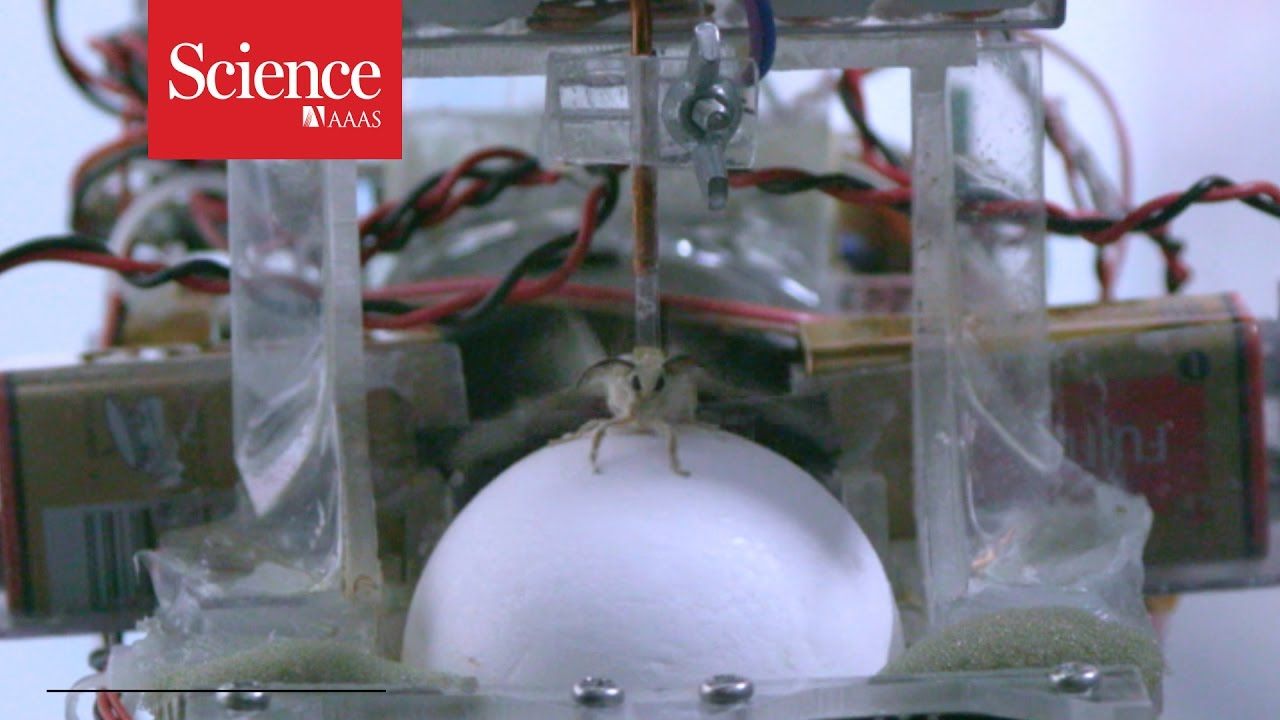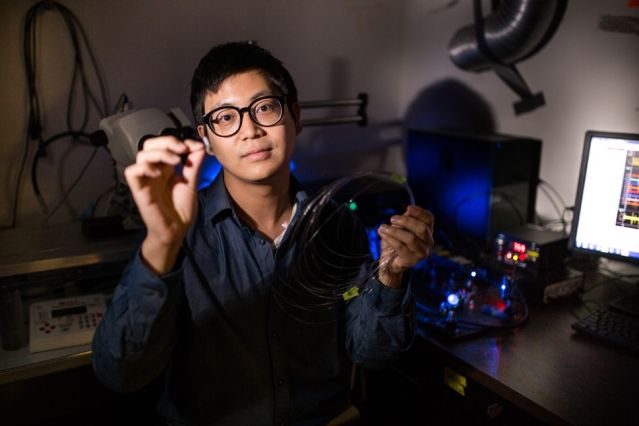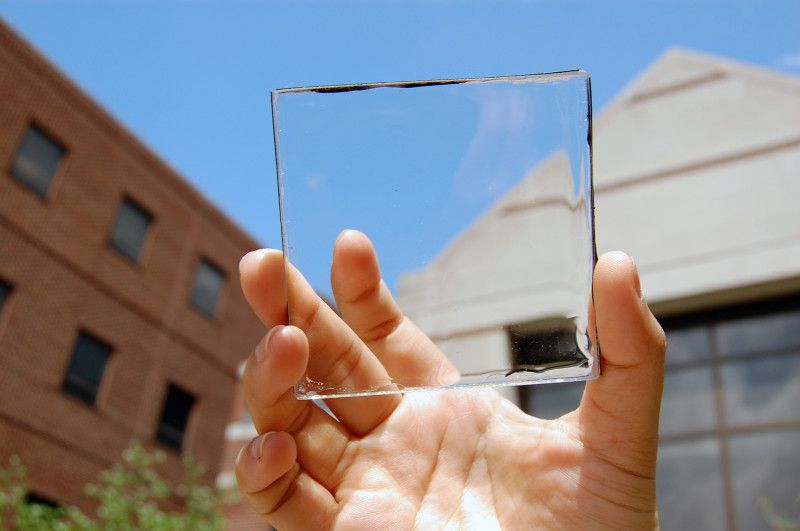Archive for the ‘engineering’ category: Page 198
Apr 6, 2017
The Nonparametric Intuition: Superintelligence and Design Methodology
Posted by John Cassel in categories: engineering, machine learning
I will admit that I have been distracted from both popular discussion and the academic work on the risks of emergent superintelligence. However, in the spirit of an essay, let me offer some uninformed thoughts on a question involving such superintelligence based on my experience thinking about a different area. Hopefully, despite my ignorance, this experience will offer something new or at least explain one approach in a new way.
The question about superintelligence I wish to address is the “paperclip universe” problem. Suppose that an industrial program, aimed with the goal of maximizing the number of paperclips, is otherwise equipped with a general intelligence program as to tackle with this objective in the most creative ways, as well as internet connectivity and text information processing facilities so that it can discover other mechanisms. There is then the possibility that the program does not take its current resources as appropriate constraints, but becomes interested in manipulating people and directing devices to cause paperclips to be manufactured without consequence for any other objective, leading in the worse case to widespread destruction but a large number of surviving paperclips.
This would clearly be a disaster. The common response is to take as a consequence that when we specify goals to programs, we should be much more careful about specifying what those goals are. However, we might find it difficult to formulate a set of goals that don’t admit some kind of loophole or paradox that, if pursued with mechanical single-mindedness, are either similarly narrowly destructive or self-defeating.
Suppose that, instead of trying to formulate a set of foolproof goals, we should find a way to admit to the program that the set of goals we’ve described is not comprehensive. We should aim for the capacity to add new goals with a procedural understanding that the list may never be complete. If done well, we would have a system that would couple this initial set of goals to the set of resources, operations, consequences, and stakeholders initially provided to it, with an understanding that those goals are only appropriate to the initial list and finding new potential means requires developing a richer understanding of potential ends.
Continue reading “The Nonparametric Intuition: Superintelligence and Design Methodology” »
Apr 5, 2017
Where is Deep Learning Being Applied? More from RE•WORK Global Summits
Posted by Alireza Mokri in categories: biotech/medical, business, engineering, finance, robotics/AI
Deep learning owes its rising popularity to its vast applications across an increasing number of fields. From healthcare to finance, automation to e-commerce, the RE•WORK Deep Learning Summit (27−28 April) will showcase the deep learning landscape and its impact on business and society.
Of notable interest is speaker Jeffrey De Fauw, Research Engineer at DeepMind. Prior to joining DeepMind, De Fauw developed a deep learning model to detect Diabetic Retinopathy (DR) in fundus images, which he will be presenting at the Summit. DR is a leading cause of blindness in the developed world and diagnosing it is a time-consuming process. De Fauw’s model was designed to reduce diagnostics time and to accurately identify patients at risk, to help them receive treatment as early as possible.
Joining De Fauw will be Brian Cheung, A PhD student from UC Berkeley, and currently working at Google Brain. At the event, he will explain how neural network models are able to extract relevant features from data with minimal feature engineering. Applied in the study of physiology, his research aims to use a retinal lattice model to examine retinal images.
Apr 4, 2017
Tiny fibers open new windows into the brain
Posted by Roman Mednitzer in categories: computing, engineering, neuroscience
For the first time ever, a single flexible fiber no bigger than a human hair has successfully delivered a combination of optical, electrical, and chemical signals back and forth into the brain, putting into practice an idea first proposed two years ago. With some tweaking to further improve its biocompatibility, the new approach could provide a dramatically improved way to learn about the functions and interconnections of different brain regions.
The new fibers were developed through a collaboration among material scientists, chemists, biologists, and other specialists. The results are reported in the journal Nature Neuroscience, in a paper by Seongjun Park, an MIT graduate student; Polina Anikeeva, the Class of 1942 Career Development Professor in the Department of Materials Science and Engineering; Yoel Fink, a professor in the departments of Materials Science and Engineering, and Electrical Engineering and Computer Science; Gloria Choi, the Samuel A. Goldblith Career Development Professor in the Department of Brain and Cognitive Sciences, and 10 others at MIT and elsewhere.
The fibers are designed to mimic the softness and flexibility of brain tissue. This could make it possible to leave implants in place and have them retain their functions over much longer periods than is currently possible with typical stiff, metallic fibers, thus enabling much more extensive data collection. For example, in tests with lab mice, the researchers were able to inject viral vectors that carried genes called opsins, which sensitize neurons to light, through one of two fluid channels in the fiber. They waited for the opsins to take effect, then sent a pulse of light through the optical waveguide in the center, and recorded the resulting neuronal activity, using six electrodes to pinpoint specific reactions. All of this was done through a single flexible fiber just 200 micrometers across — comparable to the width of a human hair.
Apr 4, 2017
Understanding the limits of deep learning
Posted by Alireza Mokri in categories: biotech/medical, business, engineering, information science, internet, robotics/AI
Artificial intelligence has reached peak hype. News outlets report that companies have replaced workers with IBM Watson and that algorithms are beating doctors at diagnoses. New AI startups pop up everyday, claiming to solve all your personal and business problems with machine learning.
Ordinary objects like juicers and Wi-Fi routers suddenly advertise themselves as “powered by AI.” Not only can smart standing desks remember your height settings, they can also order you lunch.
Much of the AI hubbub is generated by reporters who’ve never trained a neural network and by startups or those hoping to be acqui-hired for engineering talent despite not having solved any real business problems. No wonder there are so many misconceptions about what AI can and cannot do.
Continue reading “Understanding the limits of deep learning” »
Mar 31, 2017
Engineers design ‘tree-on-a-chip’: Microfluidic device generates passive hydraulic power
Posted by Shailesh Prasad in categories: engineering, robotics/AI
Trees and other plants, from towering redwoods to diminutive daisies, are nature’s hydraulic pumps. They are constantly pulling water up from their roots to the topmost leaves, and pumping sugars produced by their leaves back down to the roots. This constant stream of nutrients is shuttled through a system of tissues called xylem and phloem, which are packed together in woody, parallel conduits.
Now engineers at MIT and their collaborators have designed a microfluidic device they call a “tree-on-a-chip,” which mimics the pumping mechanism of trees and plants. Like its natural counterparts, the chip operates passively, requiring no moving parts or external pumps. It is able to pump water and sugars through the chip at a steady flow rate for several days. The results are published this week in Nature Plants.
Anette “Peko” Hosoi, professor and associate department head for operations in MIT’s Department of Mechanical Engineering, says the chip’s passive pumping may be leveraged as a simple hydraulic actuator for small robots. Engineers have found it difficult and expensive to make tiny, movable parts and pumps to power complex movements in small robots. The team’s new pumping mechanism may enable robots whose motions are propelled by inexpensive, sugar -powered pumps.
Mar 30, 2017
This fully transparent solar cell could make every window and screen a power source
Posted by Shane Hinshaw in categories: engineering, mobile phones, solar power, sustainability
Back in August 2014, researchers at Michigan State University created a fully transparent solar concentrator, which could turn any window or sheet of glass (like your smartphone’s screen) into a photovoltaic solar cell. Unlike other “transparent” solar cells that we’ve reported on in the past, this one really is transparent, as you can see in the photos throughout this story. According to Richard Lunt, who led the research at the time, the team was confident the transparent solar panels can be efficiently deployed in a wide range of settings, from “tall buildings with lots of windows or any kind of mobile device that demands high aesthetic quality like a phone or e-reader.”
Now Ubiquitous Energy, an MIT startup we first reported on in 2013, is getting closer to bringing its transparent solar panels to market. Lunt cofounded the company and remains assistant professor of chemical engineering and materials science at Michigan State University. Essentially, what they’re doing is instead of shrinking the components, they’re changing the way the cell absorbs light. The cell selectively harvests the part of the solar spectrum we can’t see with our eye, while letting regular visible light pass through.
Scientifically, a transparent solar panel is something of an oxymoron. Solar cells, specifically the photovoltaic kind, make energy by absorbing photons (sunlight) and converting them into electrons (electricity). If a material is transparent, however, by definition it means that all of the light passes through the medium to strike the back of your eye. This is why previous transparent solar cells have actually only been partially transparent — and, to add insult to injury, they usually they cast a colorful shadow too.
Mar 26, 2017
A smartphone app can screen for male infertility
Posted by Alireza Mokri in categories: biotech/medical, engineering, mobile phones

More than 45 million couples worldwide grapple with infertility, but current standard methods for diagnosing male infertility can be expensive, labor-intensive, and require testing in a clinical setting.
Cultural and social stigma, and lack of access in resource-limited countries, may prevent men from seeking an evaluation. Investigators at Harvard-affiliated Brigham and Women’s Hospital (BWH) and Massachusetts General Hospital (MGH) set out to develop a home-based diagnostic test that could be used to measure semen quality with a smartphone-based device. New findings by the team indicating that the analyzer can identify abnormal semen samples based on sperm concentration and motility criteria with approximately 98 percent accuracy are published online in today’s Science Translational Medicine.
Continue reading “A smartphone app can screen for male infertility” »
Mar 25, 2017
The Weird World of Cyborg Animals Is Here
Posted by Klaus Baldauf in categories: biotech/medical, cyborgs, engineering, robotics/AI

Roboticists frequently turn to nature for inspiration for their inventions, reverse engineering the traits that evolution has developed over millennia. Others are taking a shortcut by simply integrating modern technology with living animals.
The idea may seem crazy, but animals and machines are not so different. Just as a network of wires carry electrical signals between a robot’s sensors, processing units and motors, the flow of action potentials around our nervous system connects our sensory organs, brain and muscles.
Continue reading “The Weird World of Cyborg Animals Is Here” »
Mar 17, 2017
Google Director’s Push for Computers Inside Human Brains Is ‘Anti-Christ,’ ‘Human Rights Abuse,’ Theologians Explain
Posted by Zoltan Istvan in categories: engineering, Ray Kurzweil, robotics/AI, singularity, transhumanism
3 Christian articles/sites w/ #transhumanism in it: http://www.christianpost.com/news/google-directors-hope-for-…in-177809/ & http://straightoutthegate.com/tech-savings-gate/zoltan-istva…has-to-go/ & https://blogs.lcms.org/2017/storming-gates-paradise
Google’s director of engineering is saying implanting computers “inside our brains” is upon us, words theologians and Christian bioethicists consider a “slap in the face” to Christ and would result in horrific human rights violations.
According to the Daily Mail, Ray Kurzweil, a futurist who works on Google’s machine learning project, said at the South by Southwest conference taking place this week in Austin, Texas, that by the year 2029, technological “singularity” will be achieved, the complete merging of human and computer intelligence.













